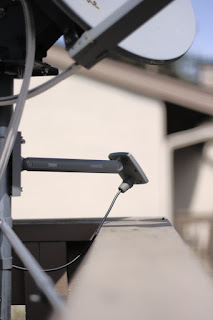Implementing Internet protocols is hard. It is hard for a variety of reasons – scalability, reliability, security are really important when anybody can write another implementation of the same protocol and use it to communicate on the Internet with your own implementation – but it is also hard because the specifications used to describe this protocols are not easy to read. It takes time to really understand a specification, which is why they generally contain one or more examples. Unfortunately some developers, instead of trying to understand how a protocol really works, try to implement them by imitating the examples they found. This creates two major problems. Firstly an example – by definition – can only show a limited subset of all the possibilities of a protocol and some subtle points will be missed if the normative text is not fully understood. The second problem is that it is not uncommon that examples contain mistakes, mistakes that will then been seen in careless implementations. I did a search in the RFC errata database, and found more than 70 errata on examples, so the problem is real.
In a perfect world, developers would understand that examples were not meant for them, or at least that they are not normative, but there is not much that can be done to improve this. Knowing that developers are lazy and will always take a shortcut if they can find one, the other solution is to improve the quality of examples in the specifications.
This is what I started to implement in version 0.1.5 of the rfc2629-tools. Normally an example is just an unstructured block of text in an artwork element, something like this (example copied from RFC 5245):
<figure>
<artwork><![CDATA[
v=0
o=jdoe 2890844526 2890842807 IN IP4 10.0.1.1
s=
c=IN IP4 192.0.2.3
t=0 0
a=ice-pwd:asd88fgpdd777uzjYhagZg
a=ice-ufrag:8hhY
m=audio 45664 RTP/AVP 0
b=RR:0
b=RS:0
a=rtpmap:0 PCMU/8000
a=candidate:1 1 UDP 2130706431 10.0.1.1 8998 typ host
a=candidate:2 1 UDP 1694498815 192.0.2.3 45664 typ srflx raddr
10.0.1.1 rport 8998
]]></artwork>
</figure>
The problem with this example is that we do not know if it is correct. For example the specification can had changed between the time the example was inserted in the Internet-Draft and the time it was published as an RFC, and nobody checked that the example was still correct.
The solution I used for my own RFC was to generate the example from the reference code I wrote to check that my specification was implementable. I did this in three steps. First I wrote a reference implementation of the protocol. Then I wrote a set of unit tests to be sure that my implementation was correct. Then I added some code to automatically generate the examples. In RFC 5928, the figures 1, 2 and 3, as table 2 are all generated by a program, and so I am reasonably sure that they are correct, but also that they stayed correct during the long process of modifying the Internet-Draft.
The code I wrote for RFC 5928 was an ad-hoc program, but I wanted to integrate the possibility of easily generate examples in my rfc2629-tools, and so version 0.1.5 contains an example generator for SDP (RFC 4566), as SDP are often used with VoIP protocols. To generate the SDP example shown above, the following XML fragment can be inserted in the XML document:
<figure xmlns:ex="http://implementers.org/2010/examples">
<artwork>
<ex:sdp username="jdoe" session-id="2890844526" session-version="2890842807" session-address="10.0.1.1" address="192.0.2.3">
<ex:attribute name="ice-pwd">asd88fgpdd777uzjYhagZg</ex:attribute>
<ex:attribute name="ice-ufrag">8hhY</ex:attribute>
<ex:media type="audio" port="45664" protocol="RTP/AVP" format="0">
<ex:bandwidth type="RS">0</ex:bandwidth>
<ex:bandwidth type="RR">0</ex:bandwidth>
<ex:attribute name="rtpmap">0 PCMU/8000</ex:attribute>
<ex:attribute name="candidate">1 1 UDP 2130706431 10.0.1.1 8998 typ host</ex:attribute>
<ex:attribute name="candidate">2 1 UDP 1694498815 192.0.2.3 45664 typ srflx raddr 10.0.1.1 rport 8998</ex:attribute>
</ex:media>
</ex:sdp>
</artwork>
</figure>
Note that the xmlns declaration should be in the rfc element, so it can be removed automatically after the generation (xml2rfc does not like namespaces, so there is a special process to remove them).
Currently only SDP examples can be generated and even for SDP there is still more work to do to guarantee that no invalid SDP can be generated (for example, the attributes are currently simple character strings. I will add the parsing of know attributes like candidates in a future version).






